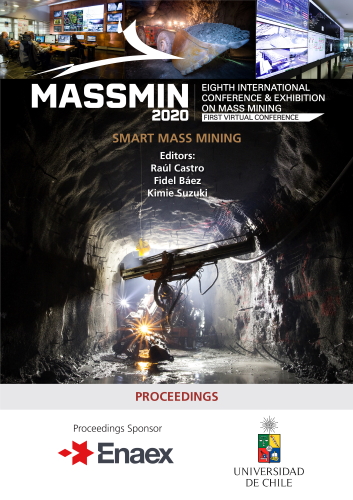Last planner system application in Recursos Norte project commissioning, El Teniente mine

|
Authors: Fernández, A; Trigo, B; Aránguiz, S |
This paper is hosted with the kind permission of Lulea University of Technology, International Conference & Exhibition on Mass Mining, 2024.
DOI https://doi.org/10.36487/ACG_repo/2063_70
Cite As:
Fernández, A, Trigo, B & Aránguiz, S 2020, 'Last planner system application in Recursos Norte project commissioning, El Teniente mine', in R Castro, F Báez & K Suzuki (eds), MassMin 2020: Proceedings of the Eighth International Conference & Exhibition on Mass Mining, University of Chile, Santiago, pp. 973-987, https://doi.org/10.36487/ACG_repo/2063_70
Abstract:
The Recursos Norte project is one of the three new projects under construction at El Teniente Mine aimed at maintaining copper production over the next five years. The project is located north of the currently productive sectors Dacita and Reservas Norte. Inside the management area responsible for project development and construction, the planning area was created to ensure milestones occurred according to the five-year plan of El Teniente, and to do so, the Last Planner System (LPS) methodology was applied, using planning cycle criteria for annual, quarterly, monthly, weekly, 36-hour and daily plans. Because mining through the Panel Caving method considers a large number of variables at the same time and interactions need to be managed among different construction companies, one of the primary challenges is coordination of project activities. The initial phase involved the development of tunnels and mining construction for the four productive levels executed within approximately 80,000 m2. This paper details the cycles, results and benefits obtained from the application of LPS during the construction phase of the project, analyzing the variation of the main key performance indicators (KPIs), implementation of standards for the different activities of the construction cycle, and planning and continuous improvement sessions (Lean Construction tools) held with the project stakeholders. As a main conclusion of the work, through the application of LPS, the commissioning of the project was achieved 15 months prior to the date established in the original plan, i.e. rather than in December 2020, commissioning occurred in September 2019. Finally, substantial improvements related to the effective management of the planning area were obtained: validated and agreed upon periodic plans regarding activity execution, increased effective work time, improved control and monitoring tools, and increased participation of stakeholders in key activities. These improvements generated collaboration with the different areas, companies, and management within El Teniente mine with a focus on the professionalization of mining construction activities and sustainability of the process.
References:
Ballard, G 2000, ‘The last planner system of production control’, PhD thesis, University of Birmingham, Birmingham.
Ballard, G & Howell, G 1998, ‘Shielding production: essential step in production control’, Journal of Construction Engineering and management’, vol. 124, Issue 1, pp. 11-17.
Leal, M & Alarcon, L 2010, ‘Quantifying impacts of Last Planner implementation in industrial mining projects’, in proceedings of the 18th International Conference of the International Group for Lean Construction, Haifa, pp. 508-527.
Morales, E & Díaz, G 2008, ‘Tunneling and construction for 140.000 tonnes per day - El Teniente mine - Codelco Chile’, in H Schunnesson, E Nordlund (eds), Proceedings of MassMin 2008, Lulea, Sweden, pp. 83-86.
Mossman, A 2017, ‘Last Planner: 5 + 1 crucial & collaborative conversation for predictable design & construction delivery (Dec 2017)’, The Change Business Ltd.
© Copyright 2026, Australian Centre for Geomechanics (ACG), The University of Western Australia. All rights reserved.
View copyright/legal information
Please direct any queries or error reports to repository-acg@uwa.edu.au
View copyright/legal information
Please direct any queries or error reports to repository-acg@uwa.edu.au
